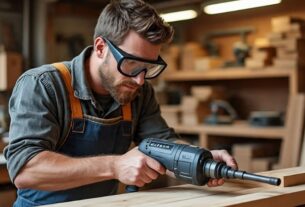When moving across the country, packing and loading are some of the most complex items on your relocation to-do list, and much of that complexity is connected to moving furniture and everything that could go wrong while managing this task. Petty stressful, right? Lucky for you, we prepared some tips and tricks that could help you preserve your physical and mental health during the relocation and enjoy each of your furniture pieces in your new home afterward.
Good Preparation Means Half the Work Done
Failure teaches success – at least, that is how the old saying goes. However, when preparing a home for sale, making mistakes when moving furniture could damage and reduce the value of your house. There are a few things you need to learn first in order to protect your possessions, as well as yourself. Before you start with the relocation of dressers and sofas, you should make a thorough plan and ensure you have everything you will need. That means you should consider the following steps:
- Make a household inventory list in order to plan which items should be moved first. Basically, you would want to move the heaviest furnishings first – when packing a relocation truck, you will start loading the vehicle with those.
- Take apart everything you can – if your office desk, couch legs, chairs, or shelves can be disassembled, make sure you do it. That way, these items will be lighter and easier to maneuver. Ensure to place all tiny pieces that belong to the same item, such as screws, bolts, or hinges, in one ziplock bag so they don’t get lost.
- Take measures of each piece and the space they must go through – remove the molding on doors if needed. If possible, get the measures for a new home before you relocate, so you can decide which objects to get rid of because they won’t fit in.
- If possible, make a layout for your new home so that you know where each piece should go (approximately).
Protecting Each Person, Your Home, And Your Belongings
Ensure that everyone who depends on you, such as kids and pets, is taken care of on those days you planned for relocating heavy objects – if not, it could lead to them being hurt in the process. The protection act also implies that every possible obstacle needs to be removed (pictures on the walls, plants, small objects along the way, and so on) so that nothing is in the way of the person(s) doing the moving.
Ensure to get all those supplies you’ll need to protect your hardwood floors, stair railings, walls, but also objects that will stay in the house after you leave. You could either purchase professional cover materials, stretch wraps, or use the stuff you already have in your household, such as blankets, rugs, and the like.

Learn the Benefits of the “L” Method
Before the beginning of your escapades, ensure that you are familiar with the technique of hooking your chairs, tables, and sofas around the doorframe – get one end of the furniture piece through the door frame and then rotate it enough so the other could go through as well. It is especially important for those bulky objects that can’t go through any other way.
Learn How to Lift Heavy Items Properly
Unless you’re planning on hiring cross-country movers, you’ll have to learn how to lift things properly and avoid a disaster. With lifting heavy objects, the possibility of injuring yourself is higher. Learning how to do it correctly so you don’t overburden a specific muscle group is a must. Because of it, ensure to memorize the following tips – they will be of help even after the relocation:
- Squat, don’t bend – when squatting, the weight of an object is on your arms and legs and not on your back like it is when bending.
- Keep items close to yourself – when you do, the weight is on your shoulders, upper arms, and forearms, in contrast to when you keep them far (then, you can rely only on the strength of your forearms).
- Don’t make sudden movements – otherwise, you could get seriously injured. Don’t rush anything.
- Slide when you can – you’ll move large and bulky objects more easily if you choose to slide them instead of dragging or carrying them. You can either purchase furnishing sliders or pick a DIY option and use plastic container lids with carpets and blankets with hardwood floors.
To Purchase Relocation Equipment or to Ask for Help When Moving Heavy Pieces?
Having the right equipment can take a lot of pressure off your back, both figuratively and literally, so think about acquiring lifting straps, but also ramps and furniture dollies. They will make the relocation process more than a little easier if you choose not to rely on cross-country movers. However, there are cases when even the right equipment can’t help you, and that’s when the human factor needs to come along – ask your friends and family for help with lifting extremely large items or when moving the furniture up or down the stairs.




